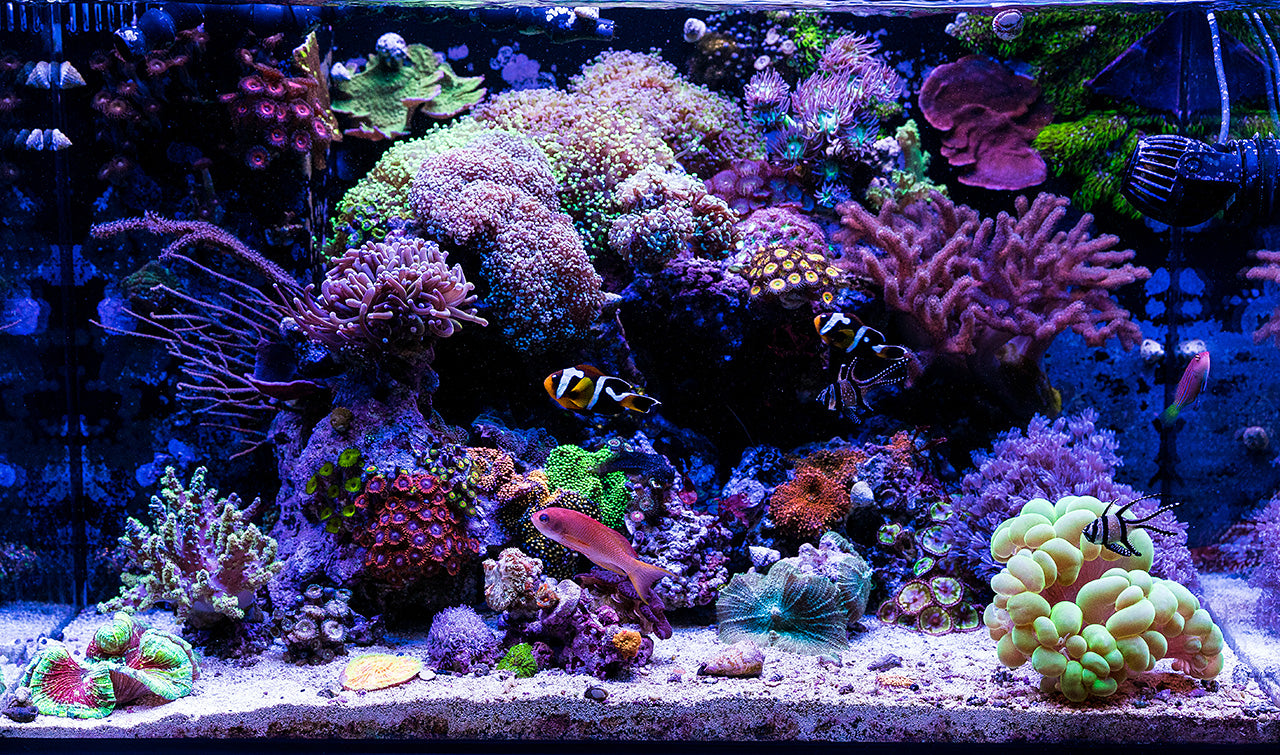




Zoanthids, Palythoa, and Protopalys are all extremely hardy coral. You’ll often find multiple polyps attached to a piece of reef rock, often coated with coralline algae. It’s a great way to add corals and seed your tank with purple and pink coralline algae.
Like mushroom coral, Zoanthid morphs are often sold with highly descriptive names like “Grandmaster Krakatoa” and “Cinnamon Apple”. These are often some of the most desirable and beautiful species, depending on ones opinion. Although, there are also plenty of zoanthids sold in the hobby with no name, that hold just as much beauty.
Zoanthids come in a full array of color combinations including orange, green, red, yellow and blue.
Give this coral medium to high light and they’ll spread across the rock, creating a carpet of vibrant color. Zoanthus enjoy medium water currents and will filter-feed on baby brine shrimp and micro pellets.
Many people have fallen in love with "nano reefs" which zoanthids are great for, there are countless beautiful pictures online of peoples Nuvo 10 gallon nano reefs, stocked to the brim with softies.
Mushrooms
Mushroom corals are a great choice for a beginner reef tank as they require low to moderate lighting. These soft corals are available in several colors such as metallic green, green-striped, blue-spotted, red and metallic blue. Keep in mind there are many varieties or “morphs” in the world of mushroom corals. These generic names are created to describe the look of the morph but aren’t governed by any scientific rules.
Actinodiscus mushroom corals should be placed low or mid-height inside the tank. If the water flow is too strong they won’t fully expand, so keep them in a calm area of the tank. You can feed each polyp with microplankton coral food OR you can also add food to the water flow. And, over time mushroom corals will reproduce and spread out on the rock. Mushroom corals are also extremely easy to propagate, all you have to do is cut a specimen symmetrically in half, and boom, you have two mushrooms. Many fragging kits are bundled and sold to make fragging easier for you.
These mushrooms thrive in lower light and slow flow rates. They make great corals for nano tanks or at the bottom of larger reef aquariums.

Pulsing Xenia
Pulsating Xenia, also known as Waving Hand Coral, is also hardy. The branched stems sway gracefully while their tentacled polyps pulse in the water. The movement creates an almost alien landscape in a tank. I personally think it’s very relaxing just to gaze at them for a period of time. They really give your tank a certain quality of “liveness.” Although Xenia is known to be an extremely hardy species, it is still recommended that you solely use water produced by a Reverse Osmosis unit. These units help to remove contaminants commonly found in tap water that would otherwise harm a coral reef.
Xenia contain symbiotic algae but are capable of filter-feeding. They thrive under moderate lighting and medium water flow. Xenia will reproduce and spread throughout the tank. If you happen to own one, you already know they grow like weeds in a healthy aquarium. In fact, you probably have reefing friends that may offer you a branch or two.
Some aquarists surround their colonies with loose rubble pieces. When the colonies spread to the rubble piece, they’ll pull the piece away, and they trade them in at their local fish shop or reefing club. There are many ways to enjoy reefing, with the emphases on "enjoy"! Happy reefing.




